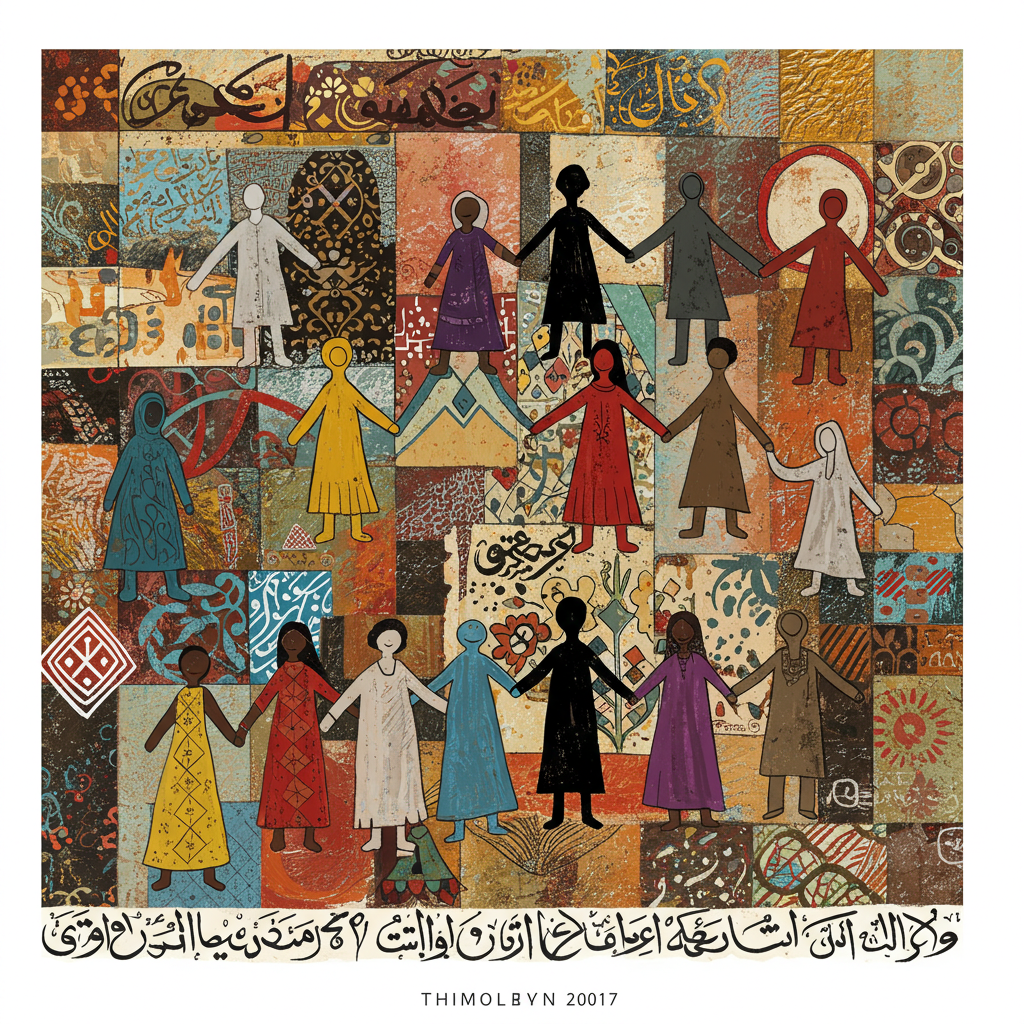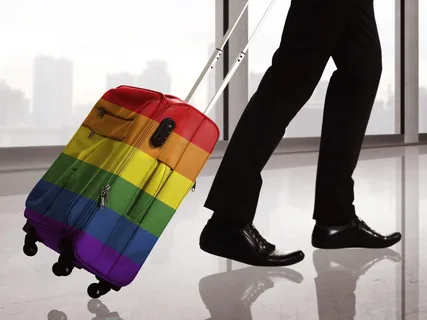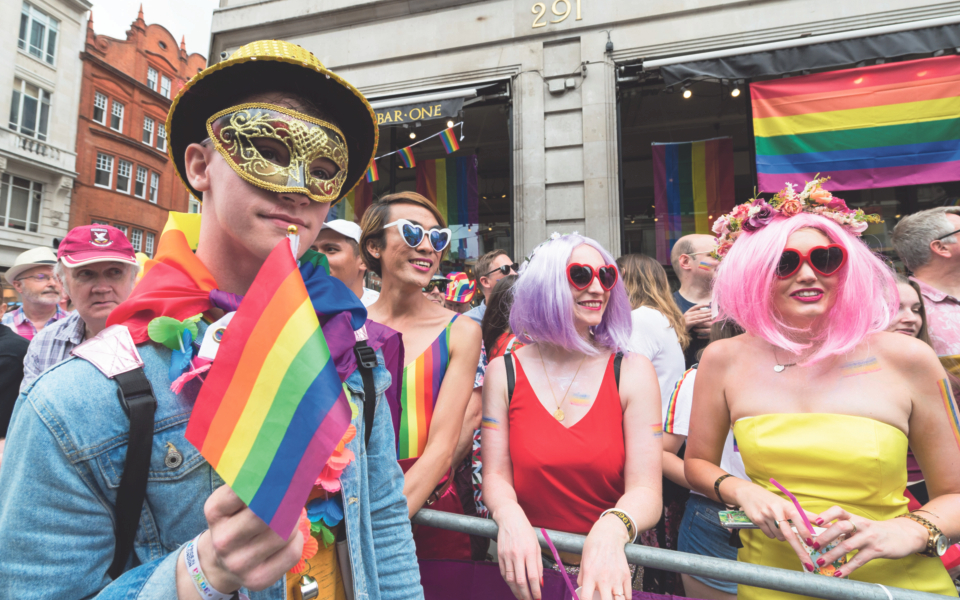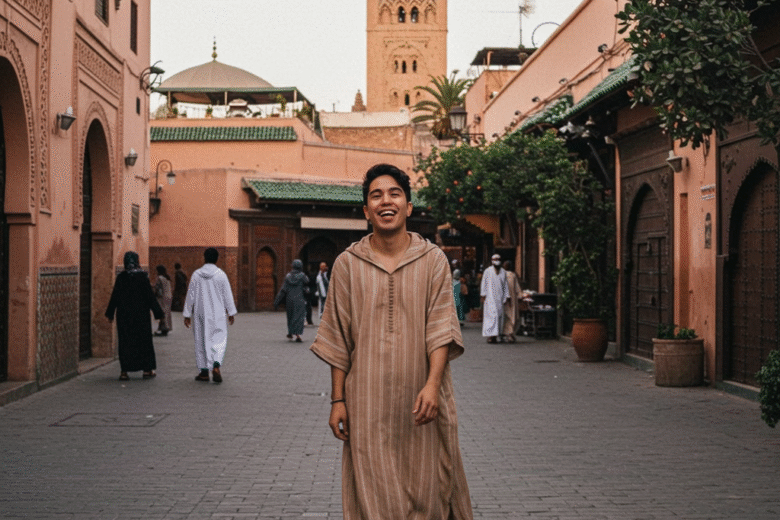Traveling while queer requires preparation—especially when you’re visiting culturally conservative countries like Morocco. If you’re wondering what not to wear in Morocco for LGBTQ+ travelers, you’re not alone. While Morocco is breathtaking, warm, and welcoming to tourists, it’s also a place where outward expression of sexuality or gender identity can be misunderstood or even legally risky.
This guide is your essential reference on what not to wear in Morocco for LGBTQ+ individuals—whether you’re traveling solo, with a partner, or as part of a group. With smart packing and cultural awareness, you can enjoy this incredible destination with confidence and care.
Why Clothing Is a Serious Consideration for LGBTQ+ Travelers in Morocco

Social Norms and Legal Climate
Before diving into what not to wear in Morocco for LGBTQ+ travelers, it’s important to understand the broader context. Homosexuality is criminalized under Moroccan law (Article 489), and although enforcement varies, public displays of queer identity—particularly through attire or behavior—can attract unwanted attention or judgment.
The Role of Visibility and Safety
Being visibly LGBTQ+ through fashion choices can sometimes be unsafe. That’s why understanding what not to wear in Morocco for LGBTQ+ tourists is not just about avoiding offense—it’s about protecting your peace of mind and physical security while abroad.
What Not to Wear in Morocco for LGBTQ+ Travelers

Gender Nonconforming Outfits in Public
If your fashion expression is fluid or gender nonconforming, you may want to adjust in public spaces. Items considered part of what not to wear in Morocco for LGBTQ+ include:
- Skirts or dresses worn by AMAB individuals
- Androgynous fashion in rural or traditional towns
- Makeup or visibly gender-fluid accessories in daytime markets
Clothing That May Be Perceived as Provocative
Revealing clothes can be doubly misinterpreted when worn by LGBTQ+ travelers. Part of what not to wear in Morocco for LGBTQ+ includes:
- Crop tops, sheer shirts, or fitted clothing
- Shorts above the knee in non-coastal cities
- Tank tops that reveal tattoos or piercings linked to queer identity
Rainbow Symbols and Pride Accessories
While you may want to wear your pride openly, in Morocco, visible rainbow flags, pins, or “Love is Love” apparel are on the list of what not to wear in Morocco for LGBTQ+—not because you should hide your identity, but because these symbols can draw scrutiny in public.
What Not to Wear in Morocco for LGBTQ+ in Urban vs Rural Areas
City Flexibility vs Village Conservatism
In Marrakech, Casablanca, or Tangier, there’s a bit more fashion flexibility. However, when you’re visiting Berber villages, mountain towns, or religious sites, what not to wear in Morocco for LGBTQ+ includes anything that signals deviation from binary norms.
Nightlife vs Daytime Attire
If you’re headed to a more liberal café or venue in the evening, express yourself modestly but authentically. Still, err on the side of caution when deciding what not to wear in Morocco for LGBTQ+, even at night—especially when leaving a bar or venue alone.
What Not to Wear in Morocco for LGBTQ+ Couples Traveling Together

Coordinated Outfits That Suggest Intimacy
While traveling with your partner, it’s natural to want to match or express closeness through fashion. However, coordinated couple outfits or clothing that signals romantic connection may fall under what not to wear in Morocco for LGBTQ+. This includes:
- Matching shirts or accessories that say “His & His” or “Wifey & Wifey”
- Custom T-shirts that identify you openly as a couple
- Any fashion piece that might hint at romantic identity in a conservative setting
Clothing That Attracts Excessive Attention
Bold fashion might be a personal signature, but in Morocco, it’s smart to stay low-key. Items that scream “tourist” or express flamboyance may unintentionally invite commentary or stares, especially when worn by LGBTQ+ travelers. These are key examples of what not to wear in Morocco for LGBTQ+ visibility-focused safety.
Cultural Cues and Local Perceptions of LGBTQ+ Expression
Why Presentation Matters in Morocco
Even neutral fashion can be read differently through Morocco’s cultural lens. Effeminate gestures, bold haircuts, or mannerisms paired with certain clothing may unintentionally “out” a traveler. Understanding what not to wear in Morocco for LGBTQ+ also means being aware of how you’re presenting in addition to what you’re wearing.
Misinterpretation and Microaggressions
Even with the best intentions, Moroccan society may misread certain fashion signals. Experiences of passive stares, gossip, or exclusion may arise—not out of hostility, but cultural dissonance. Dressing more conservatively helps reduce such moments, making what not to wear in Morocco for LGBTQ+ a matter of minimizing misinterpretation.
Safer Substitutes: What to Wear Instead
Gender-Neutral, Stylish Options
Instead of focusing on what not to wear in Morocco for LGBTQ+, consider these safe, expressive alternatives:
- Flowy trousers, kaftans, or tunics that are fashion-forward yet culturally aligned
- Oversized button-ups, monochrome outfits, or bohemian scarves
- Subtle jewelry that doesn’t explicitly indicate orientation
Blending Comfort, Safety, and Expression
Being safe doesn’t mean you have to erase your identity. You can still express yourself creatively—just with smart layering and toned-down accessorizing. What’s key in what not to wear in Morocco for LGBTQ+ is not suppressing your identity but adapting it respectfully to the local context.
Packing Tips: What Not to Wear in Morocco for LGBTQ+ Travelers

Travel-Smart Wardrobe Planning
If you’re planning outfits ahead, keep what not to wear in Morocco for LGBTQ+ in mind:
- Pack neutral tones, breathable fabrics, and unisex styles
- Choose clothing that can be dressed up or down for different settings
- Keep nightlife attire modest—no mesh tops, bold slogans, or overly tight items
Items to Leave at Home
Here’s a quick checklist of what not to wear in Morocco for LGBTQ+ and what to skip packing:
| Leave Behind | Why |
|---|---|
| Rainbow-themed apparel | May be misinterpreted or unsafe |
| Mesh, lace, or sheer fabrics | Seen as overtly provocative |
| LGBTQ+ logo jewelry or pins | May attract unwanted attention |
| Heavy makeup (for men) | Socially sensitive in public spaces |
| Mini shorts or halter tops | Considered disrespectful or flirtatious |
FAQs: What Not to Wear in Morocco for LGBTQ+ Tourists
Can I wear makeup or nail polish as a queer traveler?
While not illegal, it may draw attention in public spaces. For safety, avoid bold makeup or polish during the day if you’re AMAB (assigned male at birth).
Is it safe to wear jewelry with LGBTQ+ symbols?
Unfortunately, jewelry with pride or LGBTQ+ references is part of what not to wear in Morocco for LGBTQ+ travelers in public. Save it for private or trusted spaces.
What if I’m transgender—how should I dress?
Dress in alignment with your gender identity but lean conservative and choose modest, non-attention-drawing outfits. It’s especially important in villages and transit areas.
Can we hold hands in public?
Public displays of affection—regardless of orientation—are frowned upon in Morocco. To avoid complications, keep physical affection private.
Are queer nightlife spots dress-code specific?
Some underground venues exist in big cities like Marrakech and Casablanca, but they’re discreet. If you visit, dress modestly for entry and avoid flashy or suggestive clothing when arriving or leaving.
Conclusion – Stay Smart, Stay Safe: What Not to Wear in Morocco for LGBTQ+ Travelers
Knowing what not to wear in Morocco for LGBTQ+ is about blending expression with cultural intelligence. Morocco is not unwelcoming—but it is deeply traditional. Thoughtful dressing can help queer travelers move through the country respectfully, discreetly, and confidently.
Your clothing choices can signal awareness, sensitivity, and strength. Travel as your full self—just do it wisely. And remember: in Morocco, sometimes the best statement is subtlety.
By JobHijra

